Myanmar
Things to DO
Bagan
The extraordinary religious fervour the resulted in this unique collection of builings lasted two-and-a-half centuries.
Although human habitation at Bagan dates back almost to the beginning of the Christian are, Bagan only entered its golden period
with the conquest of Thaton in AD 1057.
Just over 200 years later Bagan declined and in 1287 was overrun by the Mongols of Kublai Khan.
But what fantastic effort happened in those Years! Since the Mongol invasion the sites have been deserted and barely touched over
the centuries.
Old Bagan
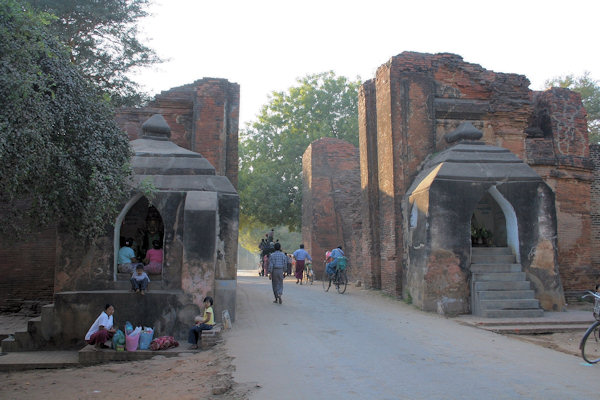 |
|||||
Tharaba Gate
The still-impressive Tharaba Gate - the former eastern entrance to the walled city - squeezes the road to Nyaung U. The ruins are
the best preserved remains of the 9th-century wall, and the only gate still standing.
Bupaya
Right on the bank of the Ayerarwady, this cylindrical Pyu-style stupa is said to date further back than any Bagan temple.
Tradition attributes The Bupaya to King Pyusawhti, who ruled in the 3rd century A.D.; most likely it was erected around the
same time as the city walls (around 850).
Gawdawpalin Pahto
It was Built during the reign of King Narapatisithu (1113 - 1163) and finished by his son Nantaungmya (1211 - 1234) and
is considered the crowing achievment of the late period. It's name means "Platform to which Homage is Paid".
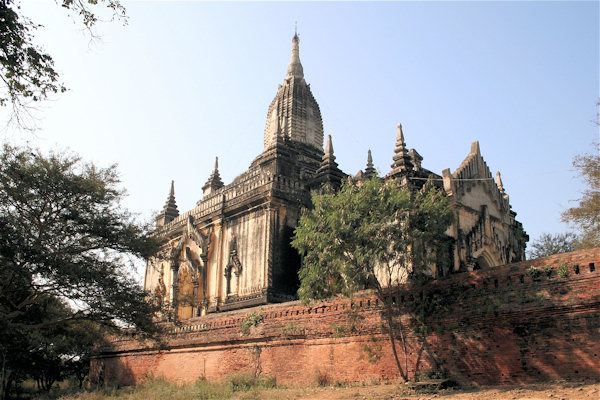 |
|||||
Shwegugyi Temple
Built by Alaungsithu in 1131, this smaller but elegant Pahto is an example of the Middle period, a transition in
architectural style from the dark and cloistered to the airy and light.
Inside you find fine stucco carvings, a teak Buddha and stone slabs (in Pali) that retell its history, including that it took
just seven months to build.
Thatbyinnyu Temple
Named for omniscience, Bagan's highest temple is built of two white-coulored boxy storeys, each with three diminishing terraces
rimmed with spires and leading up to gold-tipped sikhara, 63 m up.
Built by King Alaungsithu (1113-1163), the Thatbyinnyu is a transitional temple, standing between the Early Style and
the Late Style. It is one of the earliest double-storeyed temples, but the arrangement is different from that of later
double-storeyed temples, much as if it were still an experiment in the new form.
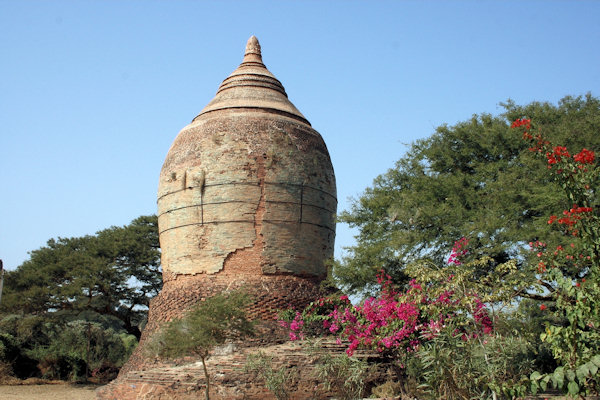 |
|||||
Ngakywenadaung Pagoda
Ngakywenadaung pagoda was donated by King Taungthugyi during the 10th century. It is a 13 meter high cylindrical doom
type pagoda. These cylindrical types of pagodas were favored by the Pyus.
Nathlaung Kyaung
Nanthlaung Kyaung is the only Hindu Temple remaining in Bagan.
The temple is dedicated to the Hindu god Vishnu. The central square of brick supports the dome and crumbled Sikhara, and
once contained free-standing figures of Vishnu as well as Vishnu reliefs on each of the four sides.
Vishnu's "10 Avatars" were placed around the outside wall, seven of these survive.
It is said to have been built in 931 by King Taunghthugyi, more than a century before Theravada Buddhism came to Bagan,
following the conquest of Thaton.
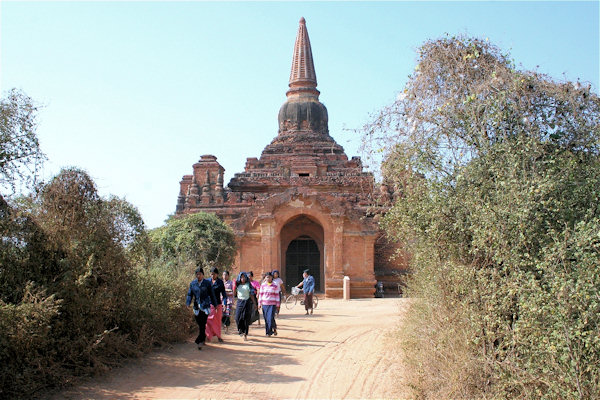 |
|||||
Pahtothamya Temple
This temple is popularly held to be one of five temples built by the non-historical King Taungthugyi (931-964) referred
to history.
But some of the archeologists also mark that it was built by King Sawlu by the references of the wall paintings which dates
back only to the 11th Century.
The interior of this single-storey building is dimly lit, typical of the early type of Pyu-influenced temples with their small,
perforated stone windows.
In its vertical superstructure and lotus-bud sikhara, however, the monument is clearly beginning to move forward from the Early
period.
Often kids with a torch will point out the super painting remnants along the interior passages, perhaps the earliest surviving murals
in Bagan.
Steps lead up to a roomy vieuwing platform
Minnanthu
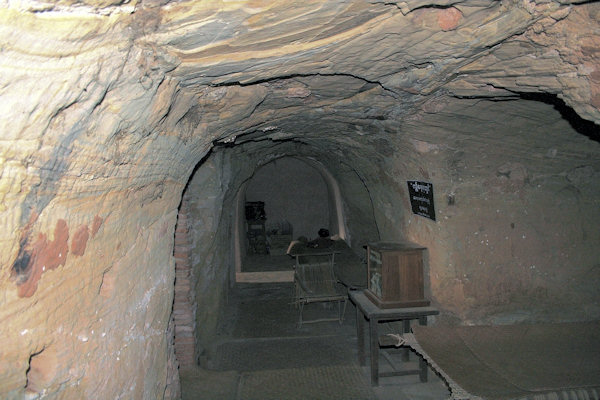 |
|||||
Kyat Kan Kyaung
A working underground monastry dates from the 11th century. Mats on the tunnel floors are used for meditation.
Sinbyushin Complex
Sinbyushin Complex was established by King Sinbyushin Thihathu in the 14th century AD.
It is a cave-type Indian-style based monument. There is also an upper level.
The inner walls of the temple are full of ancient mural paintings.
There are five stone inscriptions written about the donor and the donations of this temple and land. In the ancient times, they also
donated slaves to maintain and guard the temples. Those people had to serve the kings and then the temples generations by generations.
The bronze figure's and a seated Buddha are recently added.
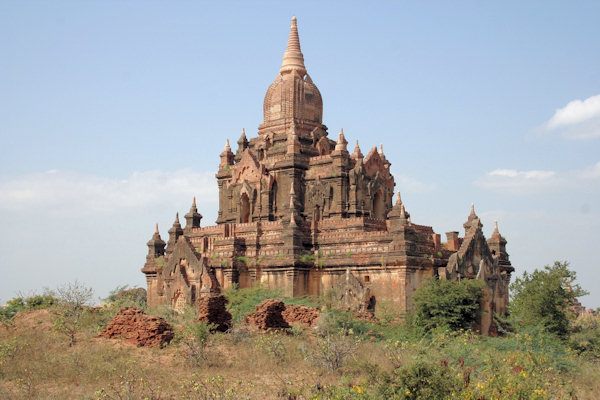 |
|||||
Thitsa Mandaing Paya
Thitsa Mandaing Paya, built in 1334 by King Saw Monnit is a three-storey building, which is a rare monument in Bagan. Most of the
temples in Bagan are found as two-storey buildings.
It is a large temple with ancient architectures of Bagan; There are ink inscriptions about maintenance of the temple in A.D 1484.
Leimyethna Pahto
The Leimyethna Pahto, the "Temple of the Four Faces", is a beautiful example of a single-storeyed temple built in the Late Style.
Resting on a platform, the temple is square in plan, with porches projecting on all four sides, and with the main entrance in the east.
The Late Style makes for a bright interior, where there are remmants of murals portraying the 28 Buddhas of the Past, scenes from the
Jatakas, and the Final Life of Gotama Buddha. Unfortunately, many of the murals have been lost in whitewash.
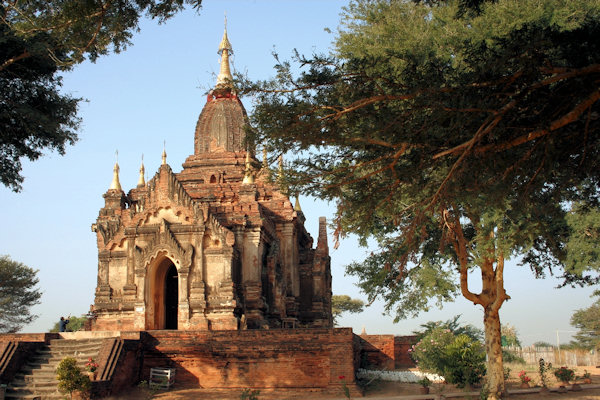 |
|||||
Shin Izza Gawna Temple
Shin Izza Gawna Temple is a two-storey Indian based style monument; built by Minister Maha Thaman in 1237 A.D. The name Izza Gauna
was the name of a powerful monk during the Bagan period who brought wealth to everyone in Bagan.
Winido Temple
Winido, it is a group of temples, which are built by Thamana Konhtin Couple in 1243. This place is seldomly visited and
difficult to access. However some of these temples are interesting.
Inside the Winido Temple are very remarkable paintings. These paintings are in the style of the late period of Bagan, decorative,
delicate but also rather extravagant.
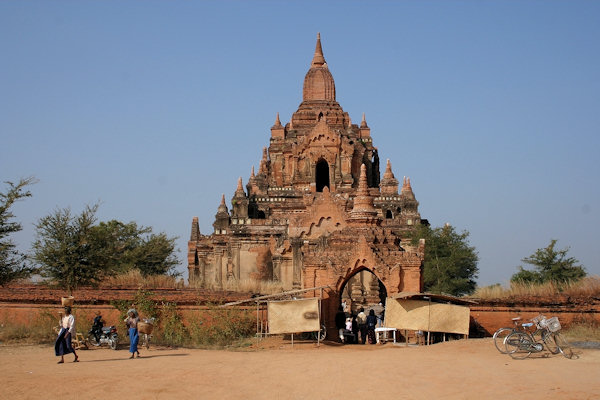 |
|||||
Tayok Pye Temple
Tayok Pye is a large temple in extreme cases of the group of Minnanthu. It was built by Narathihapate (1256-1287) also known
as the king who fled from the Mongolian invasion. This is the meaning of Tayok Pye in Myanmar.
The king was not able to complete the temple. It is a beautiful temple decorated with much smoothness, and which does not show this
king directing an empire in crumbs.
The temple has two levels. It can be imagined surrounded by a superstructure out of wood. The enamelled decoration is particularly
interesting with many plates intended to receive the jatakas.
The characters in stucco who decorate his frontage are enough rare to be mentioned.
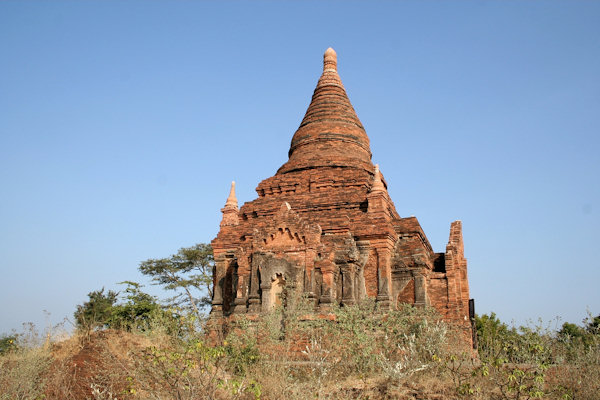 |
|||||
Nandamannya Pagoda
Nandamannya Pagoda was built in the mid-13th century. It is a single-chambered temple has very fine frescoes and a ruined,
seated Buddha image
The murals' similarity with those at Payathonzu has led some art historians to suggest they were painted by the same hand.
One of the murals represents the "Temptation of Mara" episode in which nubile young females attempt to distract the Buddha
from the meditation session that led to his enlightenment.